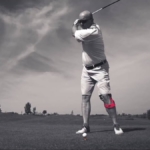OA knee braces: Buying time
Long-term compliance data raise issues.

A study published in the August issue of Orthopedics found that although unloader braces effectively relieve pain and improve function in patients with unicompartmental knee osteoarthritis, many patients stop wearing the devices after a few years and opt for total knee replacement.
By Emily Delzell, Lower Extremity Review September 2011
Experts who reviewed this study for Lower Extremity Review and work with these patients in clinical settings said it brings up two important points. First, the need to help patients get the best-fitting brace possible, which can increase comfort and compliance, and second, the importance of explaining the benefits of the brace and of delaying TKR.
“A good fit can mean the difference between the patient benefiting from the brace or not,” said Jon Divine, MD, medical director for sports medicine at Cincinnati Children’s Hospital Medical Center. “An improperly fitted device is not only uncomfortable, it can exacerbate the symptoms it’s intended to improve.”
Investigators for the Orthopedics study, a group from the Hip Knee Arkansas Foundation in Little Rock, retrospectively reviewed brace use status in 29 individuals using an unloader brace for unicompartmental medial knee OA. All patients initially reported the brace increased function and reduced pain as well as activity-related swelling and stiffness.
When patients were evaluated an average of 2.7 years after brace fitting, 40% were still wearing the brace, 35% had discontinued use, and 24% had undergone TKR.
At an average of 11.2 years, 58.6% of patients had undergone TKR and 24% had undergone arthroscopic surgery; none were still wearing the brace. At that time, the mean age of the 16 male participants was 72.69 years; the 13 women had a mean age of 63.85 years.
The authors, who did not respond to interview requests, noted in the paper that while the reasons for brace discontinuation or surgery weren’t clear, decreased efficacy or patient dissatisfaction with brace wear could have contributed.
“The primary thing clinicians need to explain to patients is the desirability of delaying total knee replacement for as long as possible,” said Kate Grace, PT, OPA, owner of Kate Grace Physical Therapy in San Diego, CA. “Many patients think knee replacement surgery will restore normal function—this is not the case. People also need to understand that it’s not optimal to have more than one knee replacement in a lifetime; revisions require a longer recovery and results aren’t as good.”
Teaching patients that knee bracing and other conservative therapies can buy them critical time before they undergo TKR is key, Grace said.
“Knee replacement was designed originally for older adults, and its main goal was reducing bone-on-bone contact and pain. The surgery wasn’t meant to restore function so people could ski or play tennis,” she said. “Anything we can do from a conservative standpoint, which includes bracing and physical therapy, puts patients in a better position for eventual surgery. If they’ve undergone physical therapy and worn a brace to prevent secondary complications of knee OA they’re in better condition when they do have a replacement.”
Divine agreed.
“Bracing is effective and, for individuals who aren’t surgical candidates or who want to delay the need for total knee replacement, braces can help them stay physically active—an important benefit for people with arthritis,” he said.
For both children and adults, a comfortable fit means improved compliance, he said.
“Finding the right orthotist or fitter who has excellent knowledge of their product and of a wide range if body types can mean the difference between an uncomfortable brace patients don’t like and one that gets worn as it should be,” Divine said.
Braces, noted Divine, are not a panacea.
“Braces produce the best results when used in conjunction with regular follow up and appropriate pharmacological pain control,” he said.
Source Lower Extremity Review
| References |
Long-term results of an unloader brace in patients with unicompartmental knee osteoarthritis, Wilson B, Rankin H, Barnes CL. Orthopedics. 2011 Aug 8;34(8):e334-7. doi: 10.3928/01477447-20110627-07.
| Further reading |
Unloader knee brace increases medial compartment joint space during gait in knee osteoarthritis patients, Nagai K, Yang S, Fu FH, Anderst W. Knee Surg Sports Traumatol Arthrosc. 2019 Jul;27(7):2354-2360. doi: 10.1007/s00167-018-5274-y. Epub 2018 Nov 1.
Efficacy of Unloader Bracing in Reducing Symptoms of Knee Osteoarthritis, Ostrander RV, Leddon CE, Hackel JG, O’Grady CP, Roth CA. Am J Orthop (Belle Mead NJ). 2016 Jul-Aug;45(5):306-11.
Unloader knee braces for osteoarthritis: do patients actually wear them? Squyer E, Stamper DL, Hamilton DT, Sabin JA, Leopold SS. Clin Orthop Relat Res. 2013 Jun;471(6):1982-91. doi: 10.1007/s11999-013-2814-0. Epub 2013 Feb 2. Full text
Is there a dose response for valgus unloader brace usage on knee pain, function, and muscle strength? Hurley ST, Hatfield Murdock GL, Stanish WD, Hubley-Kozey CL. Arch Phys Med Rehabil. 2012 Mar;93(3):496-502. doi: 10.1016/j.apmr.2011.09.002. Epub 2012 Jan 12.
Decrease in knee joint pain and increase in function in patients with medial compartment arthrosis: a prospective analysis of valgus bracing, Hewett TE, Noyes FR, Barber-Westin SD, Heckmann TP. Orthopedics. 1998 Feb;21(2):131-8.






